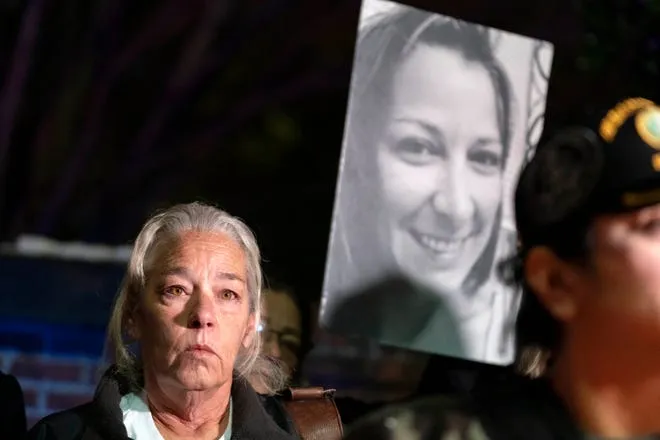Understanding the Settlement
In a recent and shocking development, the U.S. government has agreed to pay nearly $5 million to the family of Ashli Babbitt, a rioter who was killed during the January 6 Capitol breach. The incident raised numerous questions about law enforcement, free speech, and the implications of political unrest in America. As we unpack this complex story, it becomes clear that the settlement is not just a financial decision; it illuminates deeper societal issues and the ongoing ripple effects of a tumultuous electoral period.
Who Was Ashli Babbitt?
Ashli Babbitt, a 35-year-old Air Force veteran from San Diego, California, became an emblematic figure in the January 6 riots after she attempted to breach a barricaded door in the Capitol building. Tragically, Babbitt was shot by a Capitol Police officer as she tried to enter a chamber filled with lawmakers. The event unraveled in the context of the larger backdrop of political division and insurrection that America witnessed during the final days of the Trump administration.
The Settlement Agreement
The nearly $5 million payment to Babbitt’s family stems from a settlement agreement with the U.S. government, which has opened the floodgates of debate regarding accountability. Documents indicate that the agreement addresses claims of excessive force and potential violations of Babbitt’s civil rights. While the exact terms of the agreement have not been fully disclosed, the implications of the payment resonate throughout both conservative and liberal circles.
Political Reactions
The reaction to this settlement has been nothing short of polarizing. Conservative commentators quickly hailed the decision as a recognition of Babbitt’s right to protest, while liberal commentators condemned the agreement as a troubling endorsement of insurrectionist behavior. Mark Levin, a prominent conservative talk radio host, stated, ‘Ashli was fighting for her beliefs, as misguided as they may have been, and this settlement sends a message about our rights to protest corporate overreach and government tyranny.’
On the other side of the aisle, notable figures, including Rep. Eric Swalwell, expressed outrage, asserting that the payout trivializes the violent actions taken on January 6. ‘A payment in this context only serves to further legitimize a dangerous insurrectionist mentality. We can’t separate the loss felt by her family from the violent ramifications of her actions,’ he remarked.
Contextualizing the Settlement
This settlement emerges against the turmoil in post-insurrection America where the implications of the Capitol riot have remained simmering. Since that day, riot instigators have faced a range of consequences, and investigations into their actions have revealed serious lapses within the Capitol Police and other governmental safety protocols. The $5 million payment could be seen as an attempt by the U.S. government to mitigate their responsibility for a chaotic situation, in which many had expected the police violence post-George Floyd’s murder would lead to a more restrained law enforcement approach.
The Civil Rights Argument
The question of civil rights has taken center stage in discussions surrounding this settlement. Legal experts argue that regardless of the context, if there was an excessive use of force in Babbitt’s shooting, her family could have a valid civil rights claim against the government. This case could serve as a legal benchmark, reflecting broader tensions around governmental violence and collective public freedoms, including the right to assemble and protest.
What Comes Next?
Given that the settlement has been made without admission of liability, it raises the question of how this will affect future protests and the monitoring of law enforcement conduct. Politicians on both sides must navigate a complex landscape filled with polarized narratives about the Capitol riot and public trust in government. The settlement also opens discussions around potential reforms within police departments to prevent similar incidents from occurring in the future.
Public Perception
In the court of public opinion, the sentiment surrounding Ashli Babbitt remains deeply divided. To many in the conservative sphere, she has become a martyr for the cause, representing a fight against what they view as governmental overreach. On the flip side, many view her actions on that day as treasonous, disregarding the integrity of democratic processes.
Public opinion metrics suggest a significant divide, with a poll conducted by Gallup revealing that approximately 43% of Americans believe the actions taken during the January 6 riot were justified, while a significant majority recognize that such violence undermined democracy. This nuanced disagreement speaks to the ongoing struggle with how the U.S. engages with dissent and democracy.
Conclusion
The nearly $5 million settlement to Ashli Babbitt’s family encapsulates the complexities surrounding the aftermath of the January 6 Capitol riots. It raises questions regarding accountability, civil rights, and the ongoing battle over free speech in America. As the nation continues to grapple with these polarized narratives, the decisions made now will undoubtedly leave an everlasting impact on political discourse and public safety. Whether viewed as a tragic consequence of an ill-fated protest or as a catalyst for change in law enforcement, the discussions sparked by Babbitt’s death will continue to resonate well into the future.







